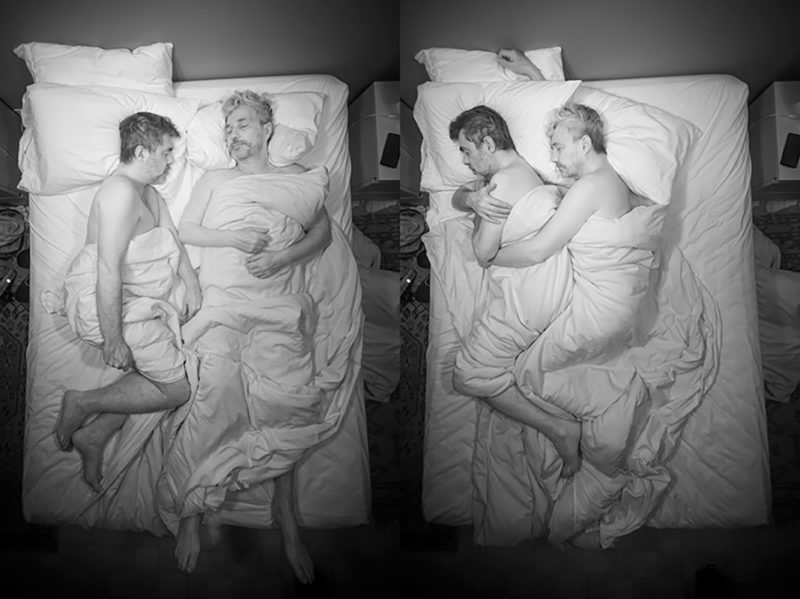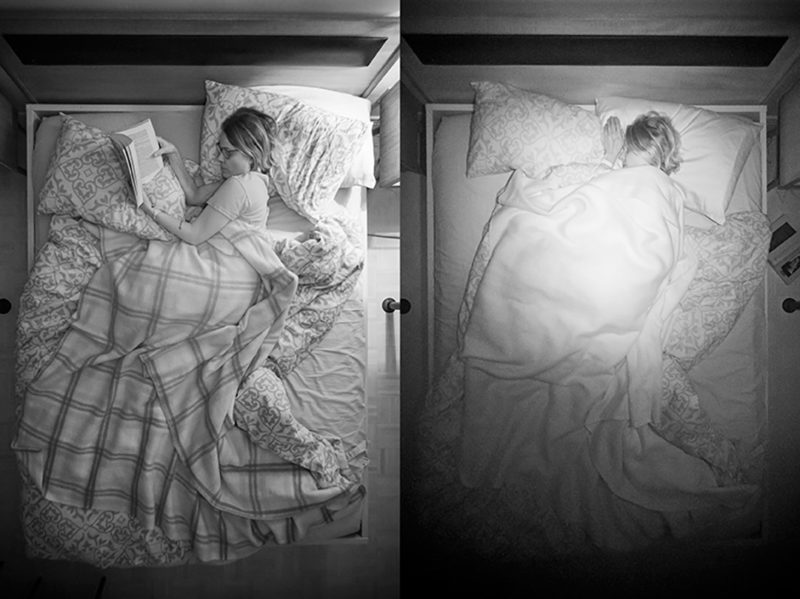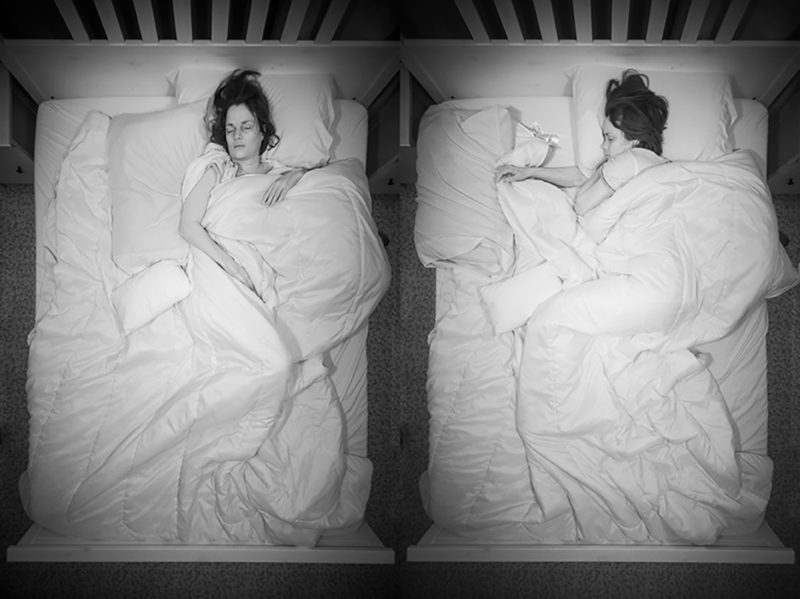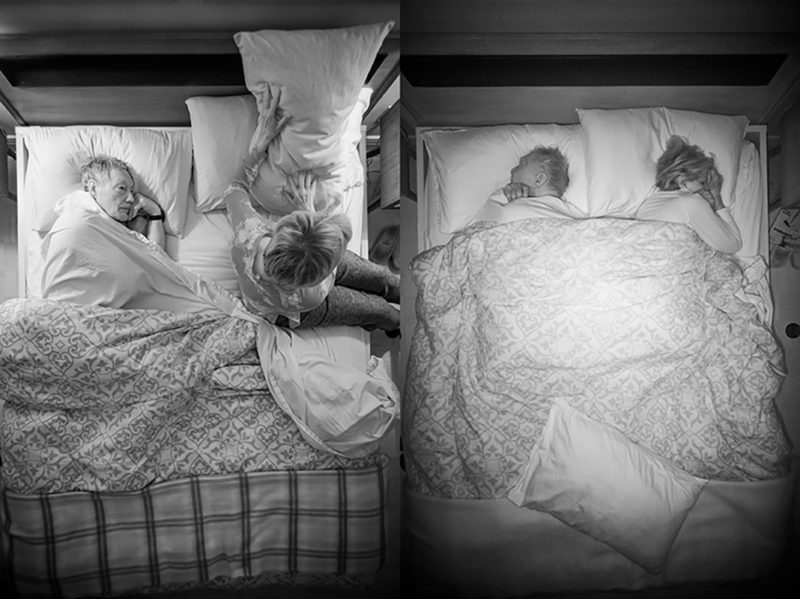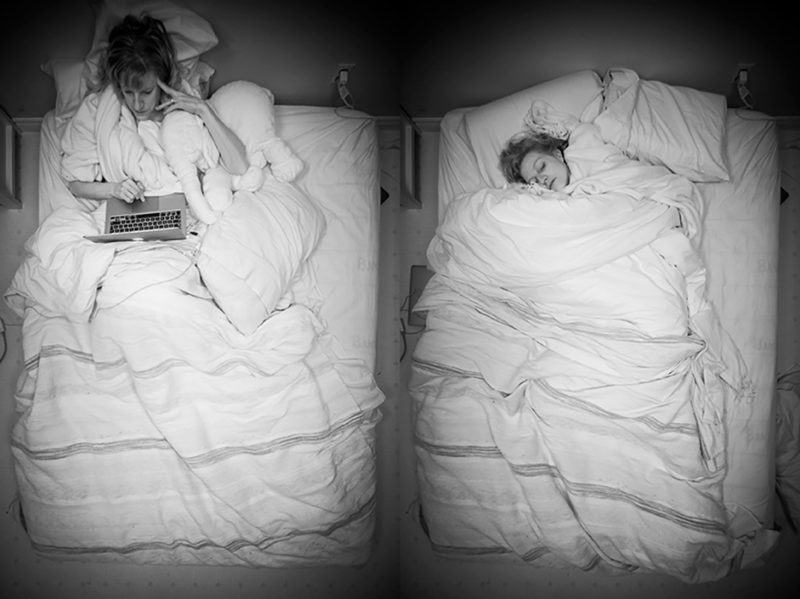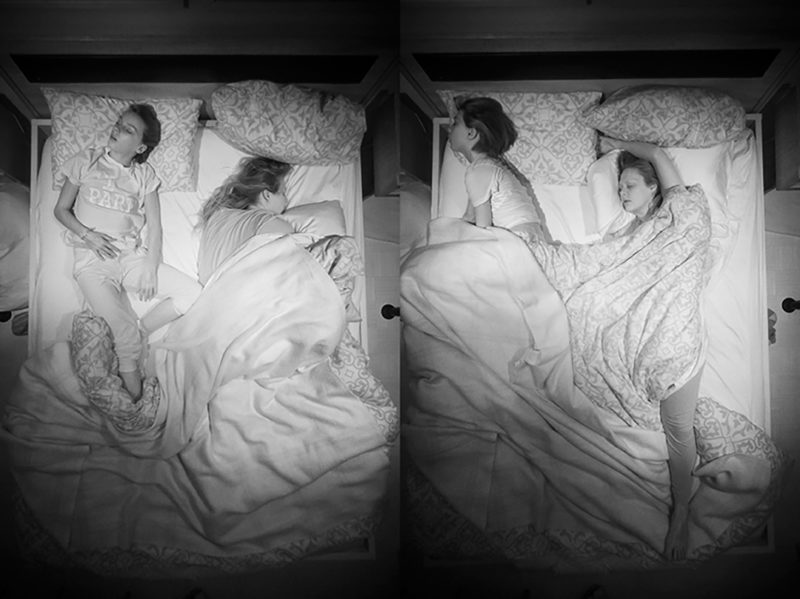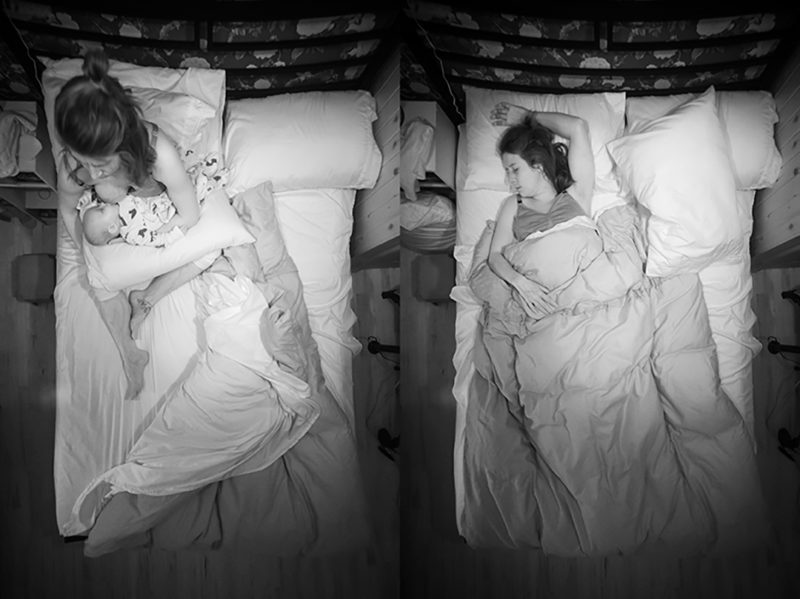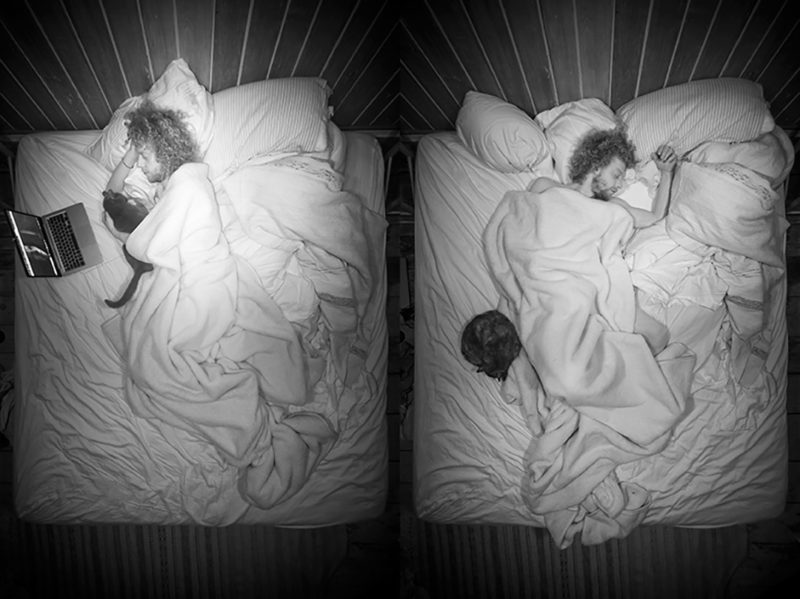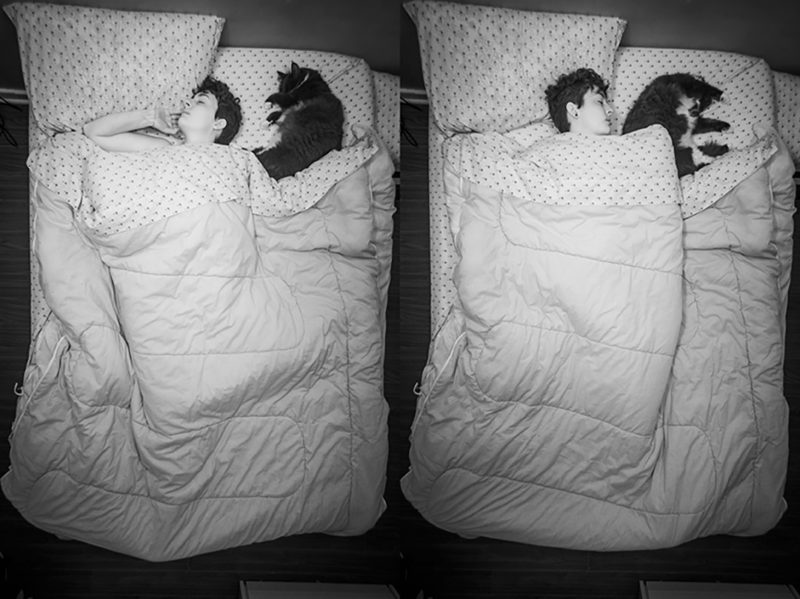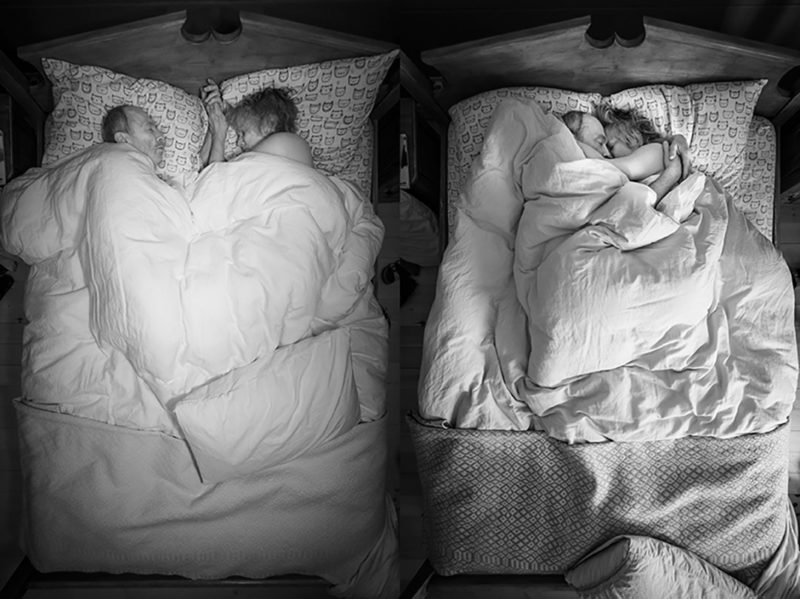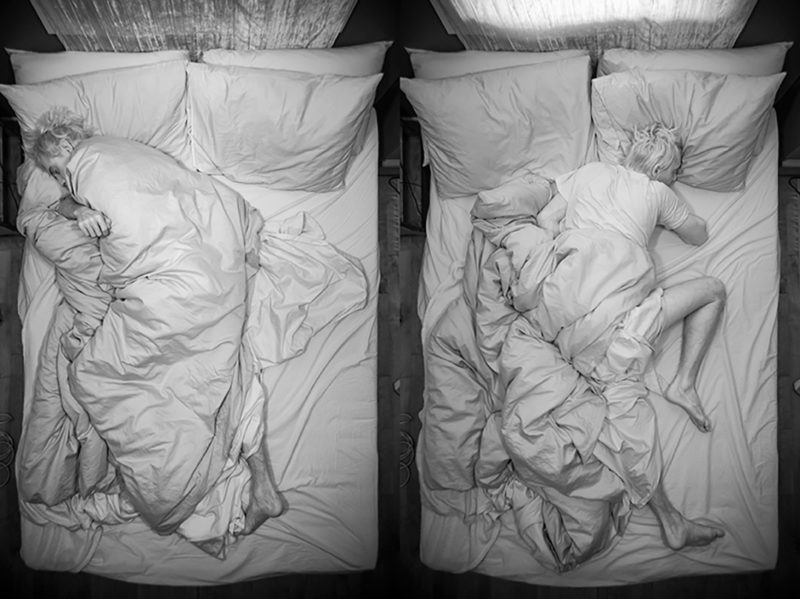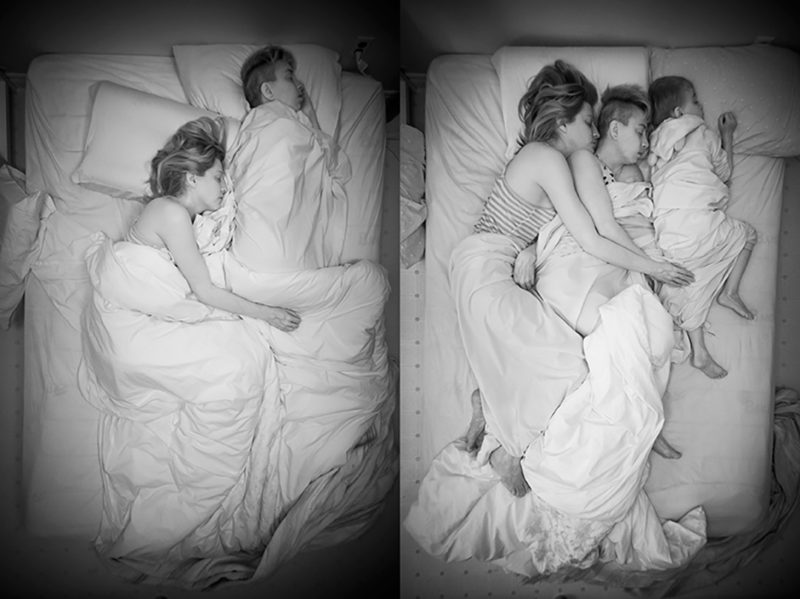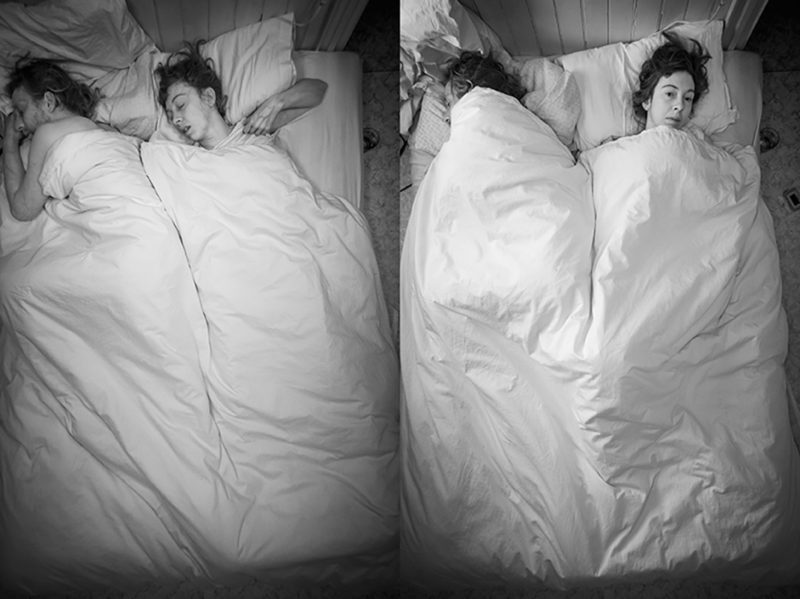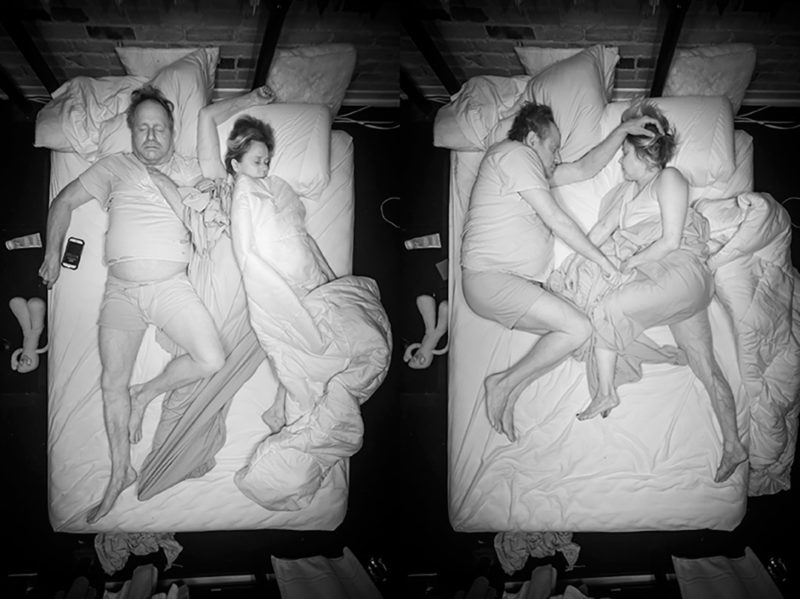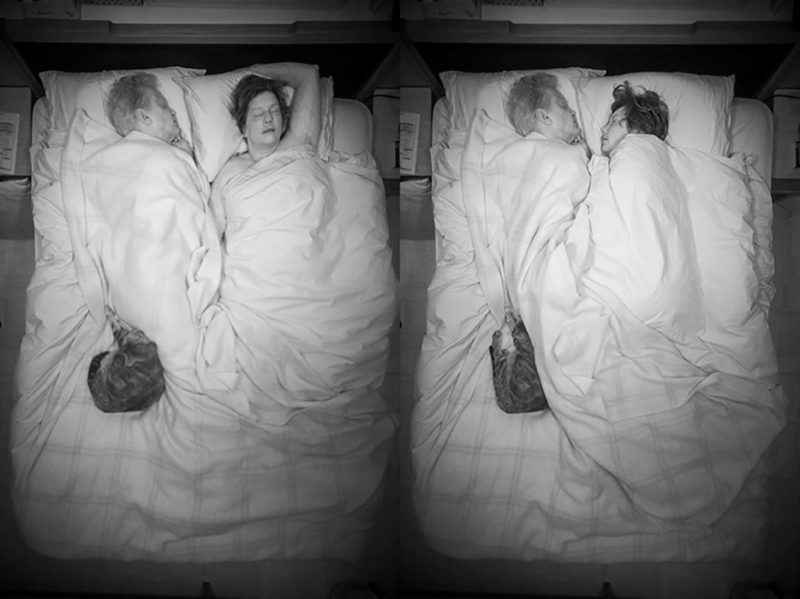[December 21, 2021]
By Sophie Bertrand
“Radioscopy,” a term borrowed from medical imagery, suggests the observation of internal movements of the body. Here, though, it is a question not of X-ray techniques but of infrared photography that captures the motions of sleeping bodies. Radioscopie du dormeur, Caroline Hayeur’s most recent photographic project, plunges us into the night to examine the gestural habits of sleep as it passes through the steps in its cycle. She interviewed the participants – single people, couples, or families – who allowed her into the privacy of their nocturnal repose. Bodies entwined under crumpled sheets, shapes modulated by blankets – people caught in outright abandon are delivered to the camera, the only witness to their slumbering state. A few, some still asleep, some awake, cast a furtive glance into the darkness, pupils dilated by the shadows. What time is it? Time is frozen until one of the sensors placed above the bed detects movement and records the instant.
Radioscopie du dormeur is a documentary project situated at the threshold of scientific study and anthropological research. This new project, shot in black and white – Hayeur has previously favoured the use of vivid, contrasting colours in her photographic production – fits logically within her ongoing artistic investigation of corporeal rituals. In fact, a number of recurrent themes from previous works are reprised here: the intimate space of the bedroom, observed in the series Mes nuits blanches (2003) and Adoland (2014–17); the sequences of body movements key to the series Rituel festif (1997), Tanz Party (2002), and Amalgat, danse, tradition et autres spiritualités (2007); and tango, the subject of Abrazo1 (2016). In 2010, her work Humanitas recorded the cycle of life, from birth to death, through a photographic mosaic inventorying primal emotions.
Aside from these themes, which seem to constantly nourish her projects, Hayeur is showing a growing interest in technical research and installation within her documentary practice. In this project, begun more than four years ago, the mechanism used to capture the images is an important part of the experiment. She was inspired by game cameras, used to track animals in a natural environment. First, she used the apparatus in the woods around her cottage in Vallée-de-la-Gatineau, in the Outaouais region, to record the comings and goings of nocturnal fauna. Having obtaining the sought-after results, she opted for equipment that included three cameras: one that took high-definition images and two game cameras. Installed in a structure suspended above the participants’ beds, the first apparatus was programmed for timed shutter releases, and the other two had motion detectors. Favouring the “invisibility of the camera,” she went early in the morning to collect the photographs and moving images recorded during the night, and she then analyzed the data gathered.
Curious without being voyeuristic, intimate rather than opportunistic, Hayeur’s approach fits within a type of collaborative documentary art, in this case aimed at surveying different “types” of sleepers. Her deliberate standing back from a real-time process of picture taking challenges the new and multifaceted documentary strategies2 and proposes a re-evaluation of our relationship with the presence (or non-presence) of the photographer. Situated between art system and documentation, Radioscopie du dormeur navigates around the unclear borders where content and form combine with and complement each other.
The first experimental section of Radioscopie du dormeur was produced during a residency in the Bas-Saint-Laurent region and presented at the tenth edition of the Rencontre photographique du Kamouraska in summer 2021, which was titled Nos recommencements.3 The works were presented on the sides of the town’s dock. Exposed to the river’s maritime cycles, dependent on the weather and the tide’s ebbs and flows, the installation’s positioning thus echoed the cycles of sleep captured in the images. The second section of the work was in production in the Montreal region at time of writing. The final form of the project should be embodied in a sound and sensory installation in a venue appropriate for an immersive experience. Translated by Käthe Roth
2. Emmanuelle Léonard, “Quelques stratégies documentaires en photographie,” in Un art documentaire: enjeux esthétiques, politiques et éthiques, ed. Aline Caillet and Frédéric Pouillaude, colloquium proceedings (Rennes, Presses universitaires de Rennes, 2017), 225–29.
3. centredartkamouraska.ca/expositions/nos-recommencements
In her thirty years as a photojournalist and documentarian, Caroline Hayeur has explored questions of the social body. She seeks out sites and forms of socialization in the tradition of humanist documentary and portraiture. Many of her projects saw their inception in artist residencies in Quebec and abroad. Whereas her images circulate in the news and information sector (dailies, monthlies, specialized press), her stagings and installations, generally large in scale, are aligned with the field of art photography. art.carolinehayeur.com/
Photographer, critic, and independent curator Sophie Bertrand has been a regular contributor to Ciel variable since 2018. Her essays have also been published in Photosolution, esse, Ricochet, and L’Oeil de la Photographie, as well as in the recent book Une histoire des femmes photographes. She is finishing a master’s degree in museology at the Université du Québec à Montréal. Her research interest focuses on contemporary and documentary photography, heritage, and photography collections.

